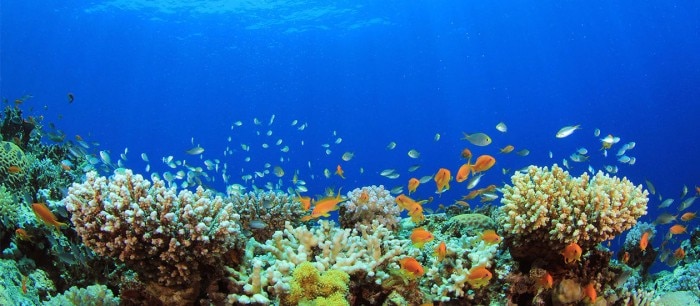메뉴
KR | KRW
KR | KRW
Sorry, we couldn't find anything on our website containing your search term.

The Ocean: An Undiscovered Treasure-Trove
생명과학 탐험
- 실험실 라이프
- 논문
- 자연
The oceans cover about 70% of our planet’s surface and are full of living organisms. However, the seas represent a relatively undiscovered realm. Only five percent of marine ecosystems and less than one percent of the deep oceans have been properly explored. Scientists estimate that billions of marine microbes have yet to be identified. These could potentially provide promising constituents for ground-breaking new medicines, innovative materials and for complex, unfamiliar biochemical structures.
Tiny microbes with huge potential
Terrestrial and marine bacteria, fungi and algae are the organisms with the greatest biodiversity on the planet. Some species occupy exceptionally inhospitable locations such as the scolding-hot, volcanically active regions of the seafloor, the freezing waters around the poles or the super salty dense waters of deep ocean underwater lakes. This great adaptability of microorganisms is the result of billions of years of evolution, with marine species having had about three billion years longer to develop than their terrestrial counterparts. The specific characteristics and the great biodiversity of marine microbes is the key to progressing the development of the emerging new “blue” biotechnology.Bioactive compounds, food supplements and biopharmaceuticals
Although algae have already been a source of regular nutrition for hundreds of years, predominantly in Asia, awareness of their healthy, bioactive characteristics is only now resulting in an increase in their popularity across the western world. Algae, for example, are rich in omega-3-fatty acids. This property is being utilized by the food industry who are cultivating algae in huge tanks to extract the valuable elements locked within. Biotechnologists, additionally, are using algae to transfer the corresponding omega-3 genes into crops such as soy and rapeseed to improve their fatty-acid composition.Bacteria are even obtainable at the local supermarket, for example, cyanobacteria in the form of spirulina or chlorella – as either extracts or tablets. Significantly greater benefits, however, are now also becoming possible, with marine biologists having recently identified over 200 bioactive substances of pharmaceutical importance from cyanobacteria. These are anti-bacterial, anti-inflammatory or can be used effectively against viruses or to inhibit tumor growth.
Find them to cultivate
One of the greatest challenges for marine microbiologists is to find, identify and grow unusual microorganisms. They must therefore undertake challenging expeditions to collect samples from different ecosystems. This research might, for example, require the use of submarines to access the deep seabed. The German Leibniz Institute, DSMZ, one of the largest biological resource centers worldwide, possesses a team of “scientific bacteria divers” who have been specially trained in diving to recover samples from underwater habitats. The real work only starts, however, after the microorganisms have been recovered and identified from a sample. Suitable mechanisms to cultivate the microbes within the laboratory have to be developed. Conditions must closely resemble the organisms’ natural habitats in order to keep them alive and propagating.Symbiotic species are fascinating
When identifying new organisms with potentially attractive properties, some researchers look closely at their symbiotic relationships. The DSMZ Dive Team, for example, have found a planctomycete living in kelp forests which produces anti-microbial metabolites; perhaps a precursor for a novel antibiotic? Others are studying sponges which live together with toxic bacteria that offer protection against the sponges’ natural predators. These bacterial toxins are of great interest for cancer research.Blue biotechnology – a promising field
Although the biotechnological use of marine microorganisms is mainly at a research stage at present, the potential for industrial-scale development is enormous. While the terrestrial flora and fauna has been widely explored within the last 500 years, the oceans still present a little known treasure-trove awaiting discovery.자세히 보기
간단히 보기
